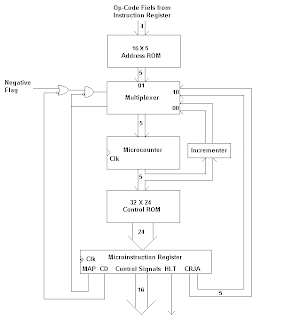The control unit (often referred to as the control system or control) controls the various components of the computer, reads and interprets (decodes) instructions for the program, converting it into a series of control signals that activate the rest of the computer.
Control systems in advanced computers may change the order of information, which is to improve performance.A key component common to all CPUs is the program counter, a special memory cell (a register) that keeps track of where in memory the next instruction is to read.
The function of the control system is as follows, note that this is a simplified description and some of these steps can be performed simultaneously or in a different order depending on the CPU:
Read the code of the next instruction from the cell marked with the program counter.
Decode the numerical code in a series of commands or signals for each of the other systems.
Increase the program counter so that shows the next statement.
See what data classes require cells in the memory (or perhaps from an input device). The location of the required data is typically stored in the instruction code.
Provide the necessary information to the ALU or register.
If the instruction requires an ALU or specialized hardware to complete the loading of equipment to perform the requested operation.
Write the result of the ALU to a memory location or a register or perhaps an output device.
Return to step




0 comments:
Post a Comment